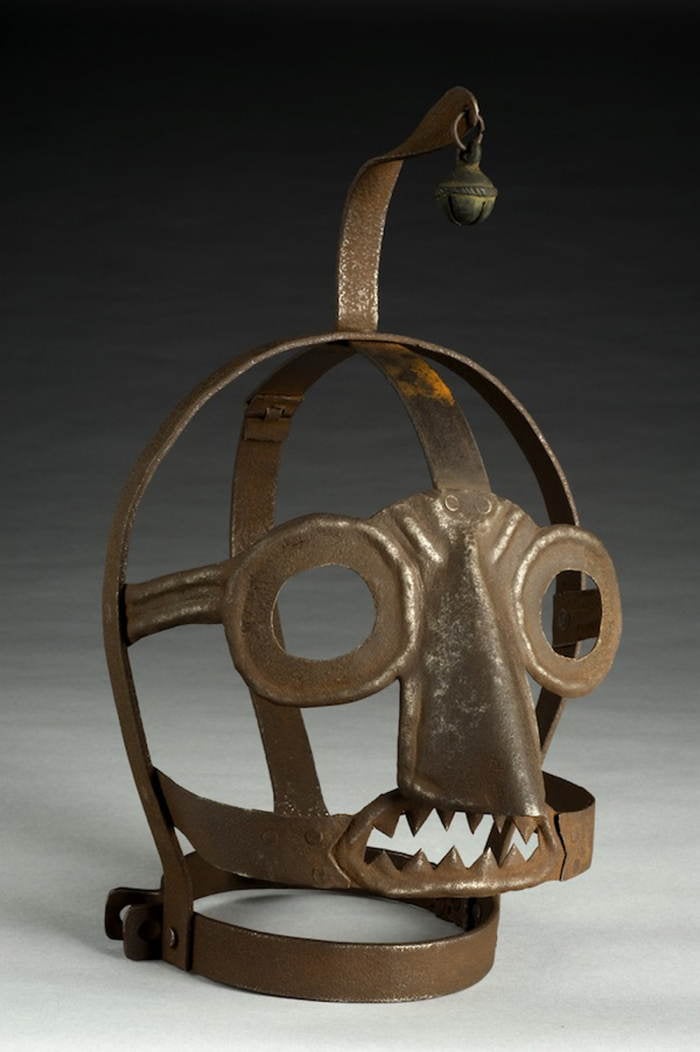
This little item is one of the more disturbing objects on the list. A Scold’s bridle is a fearsome looking thing from the 1500s whose purpose was to cure your gabbing woman of her nasty—and apparently singularly female—tendency to fight or gossip. When secured to the woman’s head, this contraption rendered her incapable of speaking.
Occasionally, these creepy masks would be studded with spikes near the mouth, which meant that if the overly chatty female dared try to speak, she would experience immediate pain.
The mask had its origins in Britain and spread like a disease to some other European countries, with the punishment normally handed down by a local magistrate. This particular example features a bell, which was meant to draw even more attention and embarrassment unto the wearer. It continued to be used until the early 1800s as a punishment for another marginalized sect of society: the poor.

While “splatter mask” sounds like a horrifying name to an object meant for a rather cruel punishment, these devices were actually protective gear worn by British tank operators in World War I. Tanks in the early 1900s had not reached their full operating or safety potential; they often broke down and could be all but destroyed by enemies’ heavy artillery.
Anyone operating the tank was in the direct line of fire for flying shrapnel and bullets, and the tanks themselves were known for spitting rivets in the faces of the occupants. The splatter mask was fashioned from chainmail and tough leather, and though it looks intimidating, it was your best friend if you found yourself inside the belly of a rolling beast.
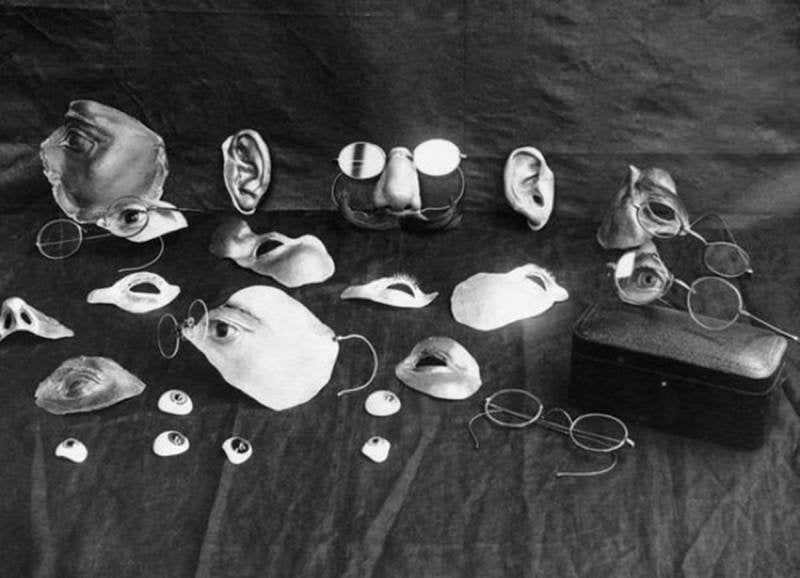
Feast your eyes upon this disturbing photo of early plastic surgery prosthetics, complete with spectacles to keep the parts in place. The original caption found with this photo says: “Repairing war’s ravages: renovating facial injuries.” The leaps and bounds made within the field of plastic surgery were perhaps some of the very few positive effects of World War One.
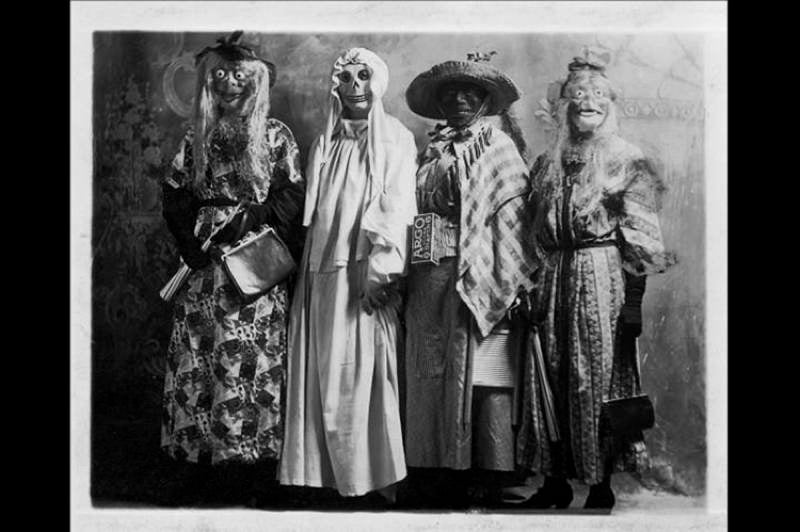
Source: Weird Tales Magazine
Years and years ago, people didn’t have the luxury of hopping over to the mall to pick up a costume for Halloween. People actually had to make their own Halloween costumes, and as you might expect they were more unnerving than anything you’ll find at stores today. As it turns out, the recipe for a perfect costume was a lot of papier mâché and a just a pinch of pure, unadulterated evil.

Source: Pinterest
In case the aforementioned masks haven’t provided your subconscious with enough nightmare fodder already, here’s a picture of a spooky shaman. Featured in this shot is a Qagyuhl tribe shaman sporting a ceremonial mask of the Nuhlihahla, a forest spirit known for impersonating fools and its devotion to filth and disorder.
This photo was taken in 1914 during a winter dance ceremony of the tribe in North West Coast, British Columbia. Edward S. Curtis, photographer, 1868-1952.

Source: Cracked
Looking for an innocuous way to introduce your children to the horrors of war? Why not via a beloved cartoon mouse icon? These gas masks were invented in 1942 so kids wouldn’t feel left out in the event of a good ole wartime gassing. Thank all your lucky stars that these terrible things never had to be put to use, and in a somewhat less offensive move, that they were simply handed out as mementos to older folk when the war was over.
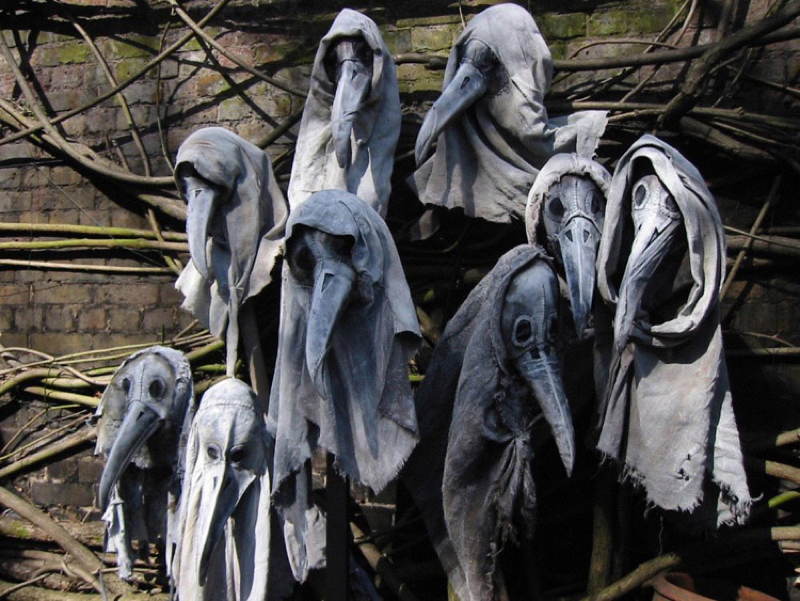
Source: Gallery Hip
It’s an image that many recognize but few know much about. With its long, curved beak and soulless eyes, the plague mask can be seen in many a costume shop, but its origins are much darker. There are accounts of a similar mask being used in during the 14th century plague, but the full getup (including a protective head to toe garment, gloves, boots, and hat) is credited to Charles De Lorme, who brought the whole thing together in the 17th century.
The purpose of the beak-like mask was to keep bad smells at bay by packing the tip with flowers or herbs. At the time, doctors studying the plague employed the miasma theory- that disease was spread by smell, not germs.
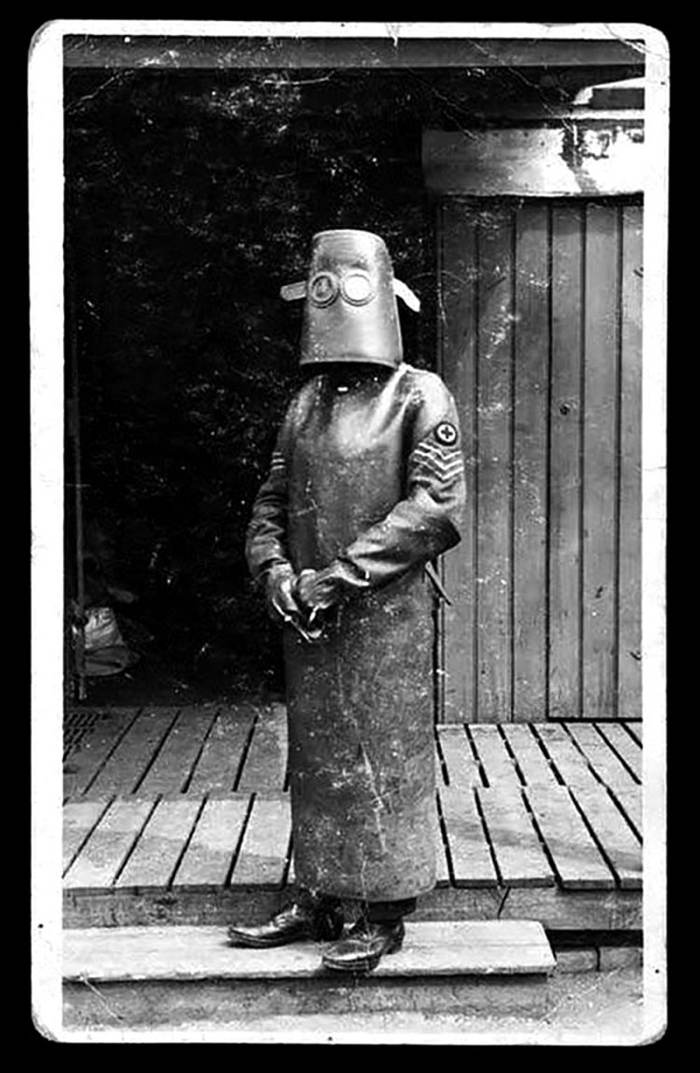
Keeping with the medical theme, pictured here is a 1918 French radiology nurse technician during WWI. This photo was taken during the dormant period of radiology protection, when experts were just beginning to figure out how to protect technicians from harmful x-rays.
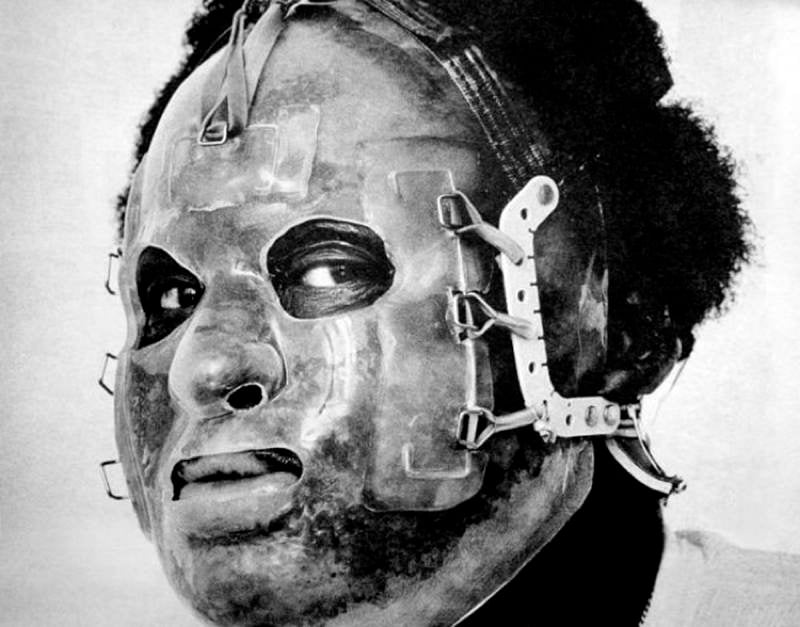
Source: The Daily Mail
Shown with this ghastly facial apparatus is Kwasi Afari Minta, the most badly burned survivor of the “King’s Cross” fire that occurred in the public transportation tube known as the London Underground in 1987. Minta’s face “melted away” when he was hit in the face with a fireball in this tragic blast that killed 31 people and injured many others.
The mask provided a protected and sterile atmosphere so skin could safely grow back, while simultaneously shielding Minta’s face from the faint of heart. Even after this tragic fire destroyed his face and hands, he said he felt lucky to be alive.
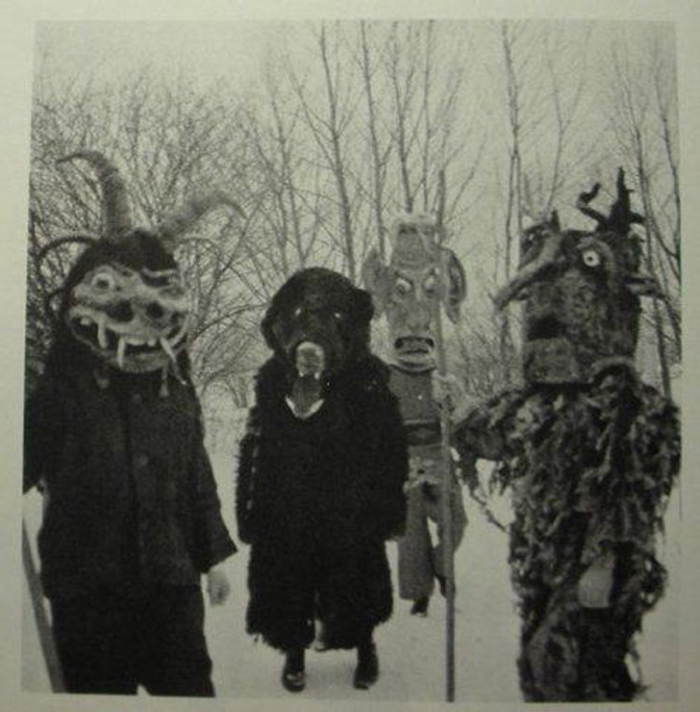
Source: Tumblr
As chilling as this group looks, they are in the business of good, not evil. In a traditional Bulgarian practice meant to ward off evil spirits, Kukeri is the New Year’s ritual of men dancing through their village in wooden, double-faced animal masks, visiting people’s houses at night – so “the sun would not catch them on the road.”
After the house calls, they gather in the town square and dance around to “amuse” people. Though this particular image is quite old, the Kukeri festival is alive and well today.
Next, check out the glamorous and gruesome history of the masquerade ball.





